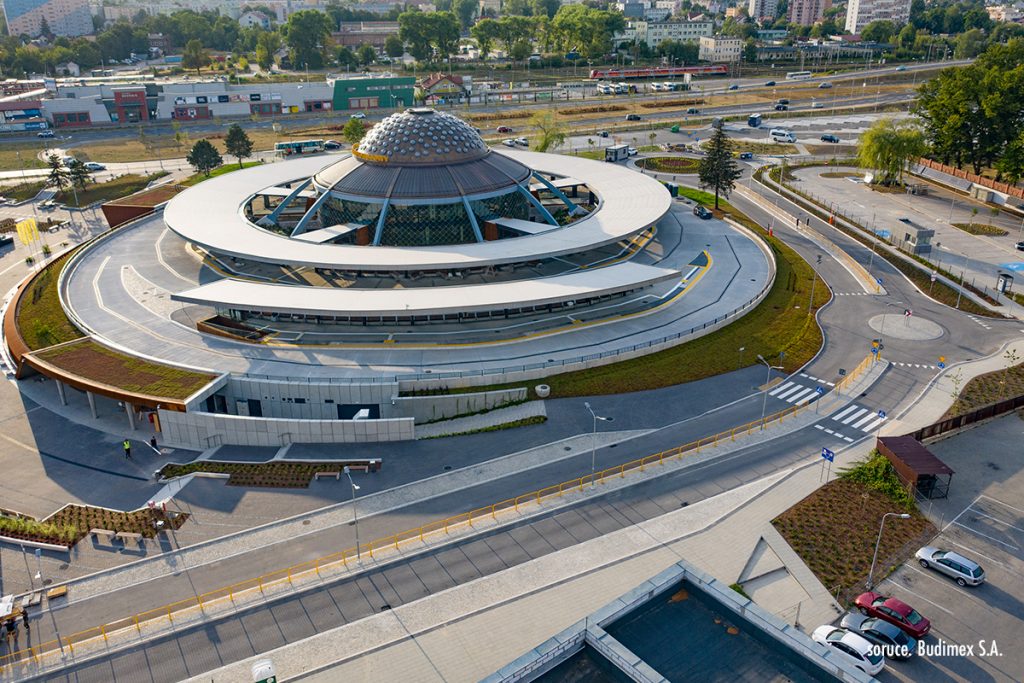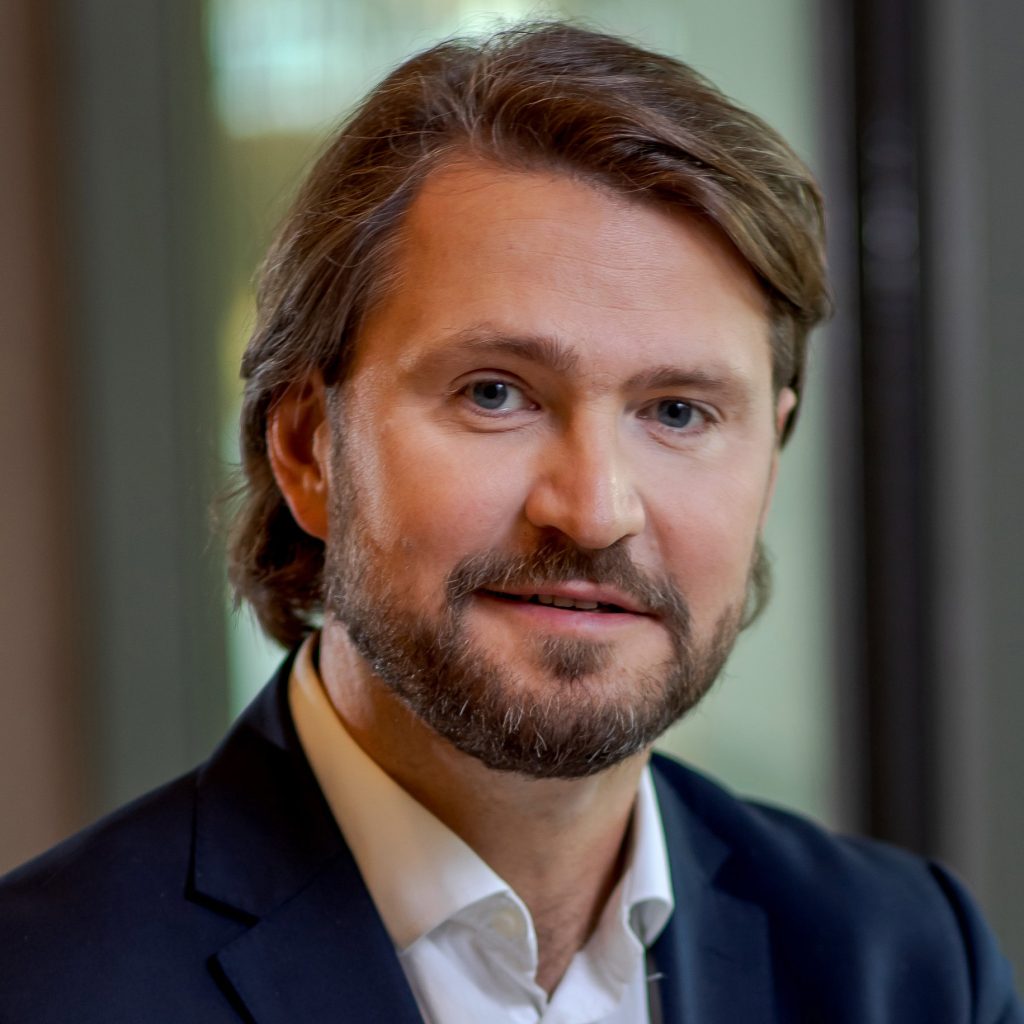Industrial construction is responsible for a third of all waste generated in the European Union . In practice, a large proportion of this waste still ends up in landfill. The main remedy for this problem is effective recycling, but there are also other ways – an increasingly visible trend is to process recovered materials in a way that gives them a new life and new functions.
CDW (Construction & amp; Demolition Waste) – incl. concrete, bricks, wood, plastic, glass or metal – are created at every stage of the life cycle of construction investments, from the construction of new facilities, through renovation and modernization works to demolition. The key challenge is their proper separation and segregation enabling effective recycling. As shown by EEA data (European Environment Agency), although most EU countries have exceeded the 2020 target of recovering at least 70% of generated construction waste, the way it is reused in the future could become much more efficient. Currently, the recovery of CDW consists mainly in using it to fill excavation points in construction sites or as foundation for roads. There is much more that can be done here – increasing the quality of recycling processes is the joint responsibility of all active participants in the construction market, from investors, through architects and designers, to material producers and construction companies. However, there have been some recent positive developments in terms of reusing recovered materials.

Bydgoszcz, Rothera Mills: The original ceiling beams of the Flour and Grain Granaries were reused to form the new structure. The complex will include museum rooms, restaurants, a café, an observation deck, public space and an outdoor terrace with a fountain basin. 
Łódź, Monopolis: The revitalized post-industrial complex of the former Monopol Wódczany meets the highest standards of modern construction and holds a BREEAM certificate. The applied technological solutions allowed to create a comfortable and friendly work environment, optimization of operating costs and, above all, a reduction in the negative impact on the environment. 
Communication Center in Kielce: The team working on the contract took care of historical details, such as the inscription “railway station” or several elements of the skylights, which were placed in their original place. The original elements of the saucer, which had not been used, were transfered to the “Polska na Kołach” Museum in Busko-Zdrój.
Bydgoszcz, Rothera Mills: The original ceiling beams of the Flour and Grain Granaries were reused to form the new structure. The complex will include museum rooms, restaurants, a café, an observation deck, public space and an outdoor terrace with a fountain basin. Photo. Budimex SA. Press Office
– Each project developed by Budimex is analyzed in terms of maximizing the use of secondary materials. Since 2015, Budimex has recorded a several-fold increase in the share of recovered materials among building materials. An example of such activities is the re-use of reclaimed asphalt, railroad crushed stone or hydraulic binders. We use combustion by-products (UPS), such as ash (for drying and soil stabilization) or slags (in mechanically stabilized foundations), following the principle of a “circular economy” – Ewelina Karp-Kręglicka, Director of the Purchasing Office, Quality and Environmental Protection at Budimex SA
Upcycling: ecology and other multiple benefits
Improving the recycling process is not the only way of dealing with CDW. An increasingly popular trend is upcycling, i.e. giving recovered materials a new function. This is done in two ways – both by using recovered materials as a raw material on the basis of which new materials are made, and by using new techniques that give the same material a new form or function. An example of using recovered materials on a massive scale is Aggneo – a high-quality aggregate developed by Lafarge based on demolition concrete.

The aggregate resource is non-renewable. Therefore, in order to protect natural resources, we introduced Aggneo – in this way, we save resources of natural aggregate extracted in mines and fully implement the principles of a circular economy in construction. Aggneo aggregates are produced under strict quality control – the concrete from demolition is thoroughly cleaned and selected. Aggneo Pro does not contain any, even trace amounts of other products, such as bricks, tiles and asphalt.Thanks to this, it has quality parameters comparable to natural aggregates. Aggneo Pro can be used in all stabilization as a foundation, both in infrastructure projects and in building construction. Aggneo, on the other hand, often contains admixtures of other materials, such as ceramics or bricks. Therefore, we recommend these aggregates for less demanding applications, such as construction of technical roads or as hardening for leveling the ground.

The use of recycled aggregates allows to reduce the amount of waste generated during demolition. When introducing Aggneo to the market, we tried to draw attention to the fact that such materials are full-value construction products and can be used like natural aggregates. Introducing environmentally friendly construction solutions to the market is one of the elements of our Sustainable Development Strategy. Our ambition is for the volume of recycled aggregates to reach 1 million tons per year by 2030 – says Hubert Krysiak, Sales Development Manager at Lafarge Polska .
The advantages of upcycling do not end with the reduction of waste generation. It is conducive to the reduction of the carbon footprint and energy consumption compared to the standard path of producing a new material from scratch. This practice also reduces the use of natural resources and reduces the cost of material production.
Inspirational projects
The essence of upcycling is reinterpretation – creativity, openness and innovation are essential here. Some ways to reuse materials are surprising and others are simply fascinating.
An example of an innovative approach to upcycling is the activity of the Scottish startup Kenoteq , which produces k-brick. 90% of it is made of construction waste, and the production process generates only 1/10 of the emissions compared to the production of traditional bricks. It is offered in 6 different colors, and on request, the color of the brick can be personalized using recycled pigments. The company is scheduled to ship 3 million K-Bricks in 2022.

Upcycling often goes hand in hand with innovative design. The proof is the Zero Waste Bistro Restaurant project by Lindy Bergroth , which was created on the basis of commissioned by the Finnish Cultural Institute in New York. The interior of the restaurant has been finished with ReWall material, i.e. processed TetraPak packaging. The result was an extremely impressive space with frescoed walls. Other elements of the bistro’s décor, incl. the furniture was also made in accordance with the zero waste principles, from recycled products. The project is in line with the principles of the circular economy – both walls, furniture and dishes are 100% recyclable.

Another avant-garde upcycling project is The Paris Circular Pavillon a>, in which the facade is formed by 180 interconnected wooden doors. Although this material has not been processed in any way, its unusual use is a symbol of an innovative, non-obvious approach to the circular economy concept.

Reincarnations
Environmental protection and resource efficiency are just some of the advantages of upcycling. It can also carry an important cultural message, which was noticed in 2019 by Akna Márquez, a graduate of Elisava, Barcelona School of Design and Engineering . According to her, the re-use of materials leads to the emergence of new narratives and perspectives rooted in tradition. In her project “Reincarnation”, she used bricks and ceramic tiles from Barcelona to create a new material that refers to the local identity. The result is a collection of unique surfaces created on the basis of waste from a demolished 19th-century factory in the Poblenou district, referring to the regional architecture, traditional construction techniques and colorful streets of Barcelona. This local example can become a symbol of a new trend in which upcycling has not only an ecological, but also a social and cultural dimension.
Upcycling in large construction projects
However, the use of upcycling principles is not limited to intimate, designer projects. They set trends and show how big the potential is. The positive impact of upcycling, however, should be primarily sought in the largest construction projects. Due to their large scale they use a lot of resources and have the greatest impact on the environment. How does it work in practice? What limitations do manufacturers and construction companies have to face?
– The construction materials market in Poland is heavily controlled by the market regulator. Numerous EU directives and, in particular, the Construction Law and requirements related to construction products impose the necessity to demonstrate specific performance properties at the time of admitting the product to the market and using it in the manner indicated by the manufacturer on the construction site. The scope of requirements is wide and concerns amongst other elements, structural safety (also in the context of fire), protection against noise, energy saving, use and availability, hygiene, health and the environment, and the sustainable use of natural resources. Therefore, when moving within the terms recycling, downcycling or upcycling, we must clearly distinguish two situations:
the first, when the manufacturer uses materials as an intermediate to produce a new material. We promote this practice in our company. The second situation occurs when we try to reuse previously used material – this is an area that is difficult to popularize under the applicable regulations. Product standards very often clearly define the source of individual product ingredients, and the regulations indicate specific requirements, such as the determination of reaction to fire, emission of harmful substances, etc. – says Jacek Boruc, Associate Director at Warbud SA strong>

The key is therefore to adapt the law to the new challenges of material reuse and the circular economy, while guaranteeing complete security – there is no room for compromise in this area.
– It seems that in the case of construction it becomes necessary to identify and standardize areas where it is possible to safely reuse used products. There is something to fight for – it is estimated that the erection and subsequent demolition of a building are responsible for 11% of CO 2 emissions during its lifetime. An important component of this value is the structure of the building – when looking for a way to minimize the impact on the environment, you should focus on this area – adds Jacek Boruc .
Clear direction
It can be definitely assumed that the upcycling trend will be stronger every year. This is due to the multidimensional benefits that it entails – from reducing waste generation and emissions, to innovative approaches to creating new materials, to reusing them in various forms over the years. Engineers, specialists in materials science, architects and designers have a key role to play in this process – it is thanks to innovative, effective projects that upcycling penetrates into the public awareness and gains new supporters. The condition for the development of this trend is also the adaptation of the construction law and regulations to new challenges so as to release the potential of upcycling while maintaining product safety guarantees. It is a difficult challenge, but possible to implement. The history of recent years shows that concepts that initially seemed avant-garde, extravagant and difficult to implement over the years have become the new status quo. Yes, for example electric cars, which until recently were the domain of eccentrics and now no longer surprise anyone.
Edited by:

Tomasz Bułhak – Chief Analyst, Green Europe Today
Tomasz Bułhak is currently working with the business, preparing comprehensive analyzes and providing marketing support. Actively monitors changes resulting from new trends and pro-ecological regulations and their impact on the business. For several years he worked in managerial positions in international companies from the automotive sector. He studied Journalism at the University of Warsaw.
Expert commentary:

Ewelina Karp-Kręglicka – Director of the Purchasing, Quality and Environmental Protection Office, Budimex SA.
Over 15 years of experience in the field of construction technology and procurement. A graduate of the Faculty of Civil Engineering at the Częstochowa University of Technology and a scholarship holder at the Catholic University of Leuven (2001). In 2007. She completed post-graduate studies in International Management at the Upper Silesian School of Economics in Katowice. Started her career at Budimex S.A. in 2010, where she held the following positions: quality office manager, purchasing and quality office director, and from 2019. also the director of the environmental protection office. From 2019. Vice-president of the Polish Association of Producers of Asphalt Pavements.

Hubert Krysiak – Sales Development Manager at Lafarge
He joined the Lafarge team in 2018. From the beginning of his professional career, he dealt with the development of sales and building business relations in European countries and at the global level. At Lafarge, he is responsible for the development of the offer of products and solutions in the aggregates segment. Hubert Krysiak is a graduate of the Warsaw School of Economics and MBA studies at the Warsaw University of Technology.

Jacek Boruc – Deputy Director of the Technical Office, Warbud SA.
Civil engineer, since 1998 associated with Warbud, currently as the deputy director of the Technical Office, member of the board of the Polish branch of the buildingSMART association, enthusiast of using digital tools during construction, involved in the idea of popularizing concrete with reduced eqCO2 emissions (Exegy)










